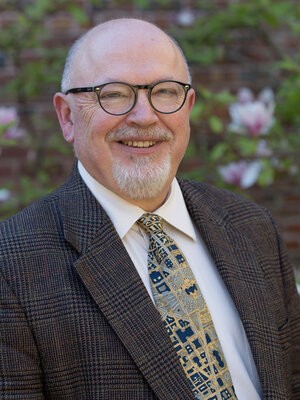
Philip Bess
Citation
Delivered by Michael Sweeney, OP, in May 2015 at the Induction into the College of Fellows
Philip Bess, architect, innovator in urban design, educator and mentor, loyal son of the Church, the Dominican School of Philosophy and Theology salutes you:
In our liturgy of Good Friday the Church prays, “Almighty and eternal God, you created mankind so that all might long to find you and have peace when you are found.” Commenting this prayer, St. John Paul II noted that, “There is … a path which the human being may choose to take, a path which begins with reason's capacity to rise beyond what is contingent and set out towards the infinite. In different ways and at different times, men and women have shown that they can articulate this intimate desire of theirs. Through literature, music, painting, sculpture, architecture and every other work of their creative intelligence they have declared the urgency of their quest” (Fides et Ratio, 24).
You have insisted that, for the sake of the happiness and well-being of its citizens, even the modern city – and perhaps especially the modern city – must “acknowledge a sacred order of which every particular city is a part.” You have lamented the design or our contemporary cities:
Contrary to classical ideals, modern life is more motion than calm, mobility than place; it emphasizes the disposable over the durable, the temporal over the timeless, novelty over beauty. …Where once there was both theoretical and practical agreement that buildings should be durable, comfortable, beautiful, and suitably decorous in their (typically urban) context, today we build everyday buildings for short-term economic gain and monumental buildings as exercises in novelty, self-expression, and advertising. The cumulative result is our contemporary built environment of junk and bewilderment.
You have proposed that “…classical humanist urbanism and Catholic social teaching can together increase our general understanding of cities, better locate the modern metropolis in both nature and sacred order in ways symbolically legible and humane, and better help human beings to flourish.”
Having completed your undergraduate degree in philosophy at Whittier College, you pursued graduate degrees in church history from Harvard and in architecture from the University of Virginia. Since 2004 you have been Professor of Architecture at Notre University, where you served for ten years as the School of Architecture’s Director of Graduate Studies. In that capacity, you were largely responsible for creating the program of urban design which has become one of the most significant and influential in the country. Prior to your appointment to Notre Dame, you were professor at Andrews University, where you were one of only two non-Seventh-day Adventist professors in the 125-year history of that University and where you were the architect of their now nationally-known program in urban design.
You have authored dozens of articles – on such topics as architectural history and theory, community building, ecological urbanism, sports Stadium design, and urban design – and three books, including your very important study, “Till We Have Built Jerusalem: Architecture, Urbanism, and the Sacred.” During the past decade, your graduate urban design studios have completed master plan proposals for Lewis University (IL), Cooperstown (NY), Northampton (MA), Ventura (CA), and Skaneateles (NY), the latter of which won the Academic Grand Prize of the 2011 Congress for the New Urbanism (CNU). In 2013-14 you were a William E. Simon Visiting Fellow in Religion and Public Life in Princeton University’s James Madison Program in American Ideals and Institutions.
In the fall of 2011, your graduate urban design studios began a multi-year, multi-award-winning project called After Burnham: The Notre Dame Plan of Chicago 2109, which envisions metropolitan Chicago at the bicentennial of Daniel Burnham's 1909 Plan of Chicago. The plan
… envisions how metropolitan Chicago might be re-fashioned so that, about a hundred years out, Chicagoans will occupy metropolitan Chicago’s rural and urban landscapes in settlements that locate and express the proper place of human beings within both nature and sacred order; create long-term rather than ephemeral wealth, in places simultaneously durable, convenient, and beautiful, and environmentally, economically, and culturally sustainable; and promote human flourishing from conception to natural death, over and across generations and into eternity.
Your projects are broad in scope, bold in their possibilities and profound in their imaginative depth; you have been called the “Metaphysical” Architect. At the same time, you insist upon architectural environments that are truly human in the precise sense that men and women are truly at home in them;
Making places in which human beings are able to feel at home—even if in this world in which we are destined to die we can never be entirely at home—is a genuine good, a primary purpose of classical humanist architecture and urbanism properly understood, and a primary criterion by which to judge the merits of any town or city at any moment in time….
Your endeavor to foster a design for buildings and, indeed, for whole cities in which “human beings are able to feel at home” is of decisive importance for the spread of the gospel and therefore consonant with the preaching mandate upon which the Dominican School of Philosophy and Theology is founded. Accordingly, we are delighted and honored that you have consented to become a Fellow of the School.
Therefore, as an expression of our esteem and gratitude, and in virtue of the authority invested in me by the Board of Trustees of the Dominican School of Philosophy and Theology, I am privileged to bestow upon you, Philip Bess, the degree of Doctor of Humane Letters honoris causa, and to name you as a Fellow of the School.
